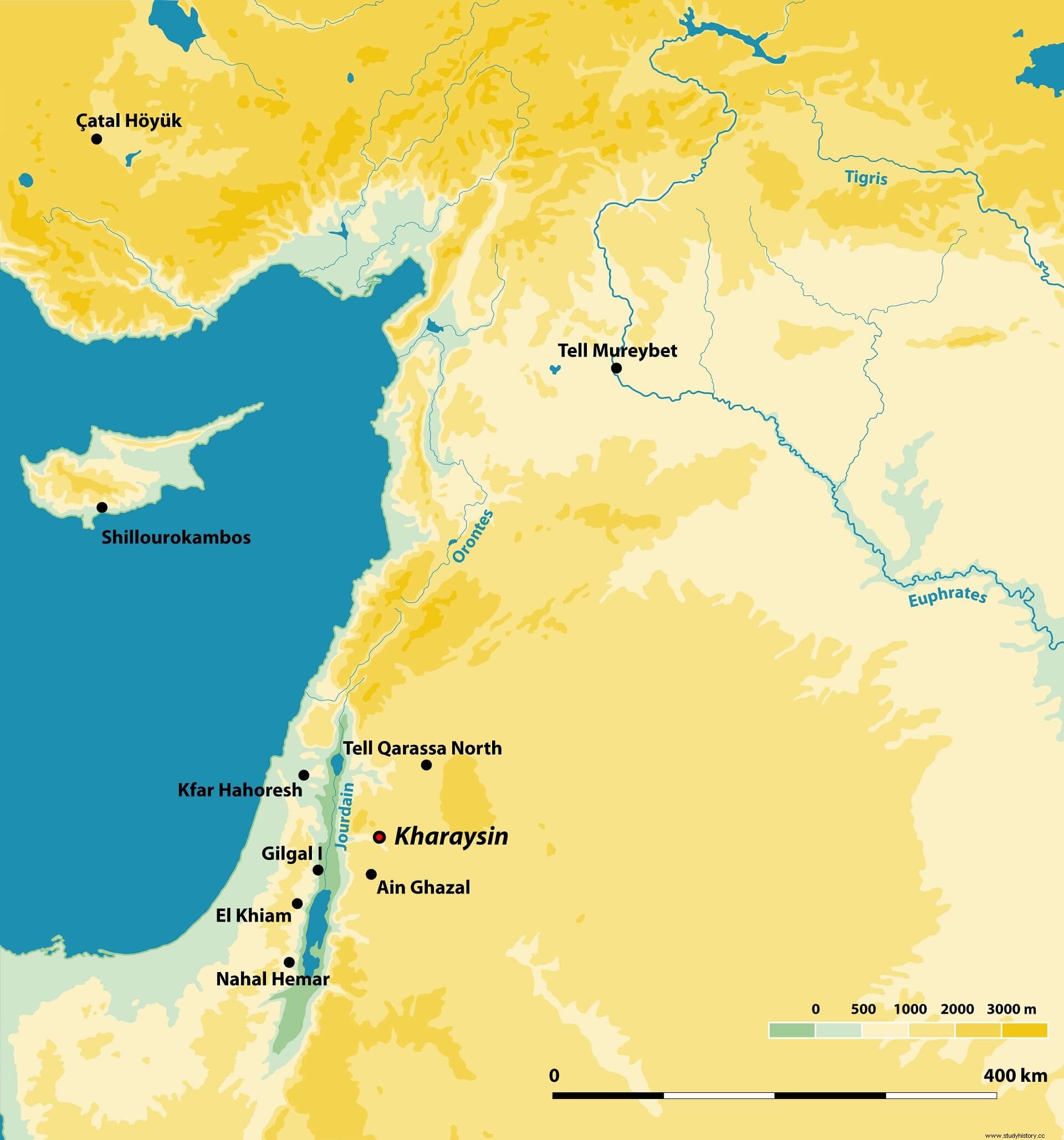
The first area where these changes took place was the Fertile Crescent, the region comprising Mesopotamia, the Zagros, the Taurus, and the Levant. Between 12,000 and 9,800 years before Christ, the last hunter-gatherers began to settle, practicing a diversified economy , in which the collection of cereals and wild legumes were of growing importance. Between 9800 and 8500 years a. C., during the Preceramic Neolithic A, the first Neolithic groups began to live in stable settlements, cultivating cereals and legumes and managing the still wild animals, in a phase prior to the domestication of plants and animals. In the Preceramic Neolithic B, between 8500 and 7000 years a. C., the great Neolithic towns of farmers and ranchers arose. It is at the end of this period when the expansion of the new Neolithic life forms to Europe, Asia and Africa takes place.

The Kharaysin site is located in the province of Zarqa, northern Jordan, at the southern end of the Fertile Crescent. It is a large settlement of 25 ha, with four levels of occupation, dated between 9,000 and 7,000 years BC. C . Its excavation and study allow us to understand the beginnings of agriculture and livestock, the invention of houses and the emergence of the first stable towns.

In the earliest occupation phase, dated to Preceramic Neolithic A, in the first half of the 9th millennium BC. C., the cabins were still oval and were built in pits dug into the ground, although innovations such as the division of the internal space or the use of lime to cover floors and walls, the oldest documented to date, have already been documented. In the second phase of occupation, in the second half of the 9th millennium, at the beginning of the Preceramic Neolithic B, the houses, still semi-buried, are rectangular with rounded corners and are built next to each other, sharing dividing walls. The floors and walls are covered with lime and the houses have a central hearth, dug into the ground. In the third phase, in the first half of the 8th millennium, the houses are fully rectangular and built on the ground. They are arranged parallel to each other, forming streets that are arranged perpendicular to the slope. From this period dates a painted lime floor that has been extracted and restored and is exhibited in the Museum of Archeology, in the Amman Citadel. We also find human figurines in flint and terracotta, which shows the knowledge of clay firing prior to the appearance of ceramics. In the fourth phase, at the end of the 8th millennium BC. C., the town acquires the maximum extension, appearing large buildings that, for the moment, we only know thanks to geophysical prospecting. This phase of maximum expansion precedes the abandonment of the settlement, the result of an enigmatic collapse that has also been documented in other sites of the period.
